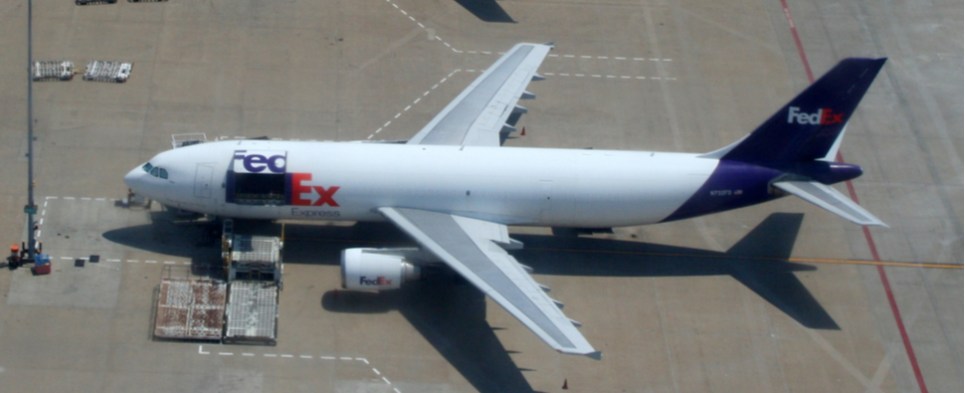THE FABULOUS 5: TOUCHING DOWN AT AMERICA’S TOP CARGO AIRPORTS
The U.S. air cargo market has been increasing at a steady clip. The economy has officially rebounded and in 2017 alone roughly 61.5 million tons of freight moved via airlines worldwide. Cargo airlines enjoyed healthy revenues of $95.9 billion, and there are a handful of American cargo airports that surged into 2019 as a result.
Memphis International Airport (MEM)
The leader of the pack, MEM is No. 1 in the U.S. and No. 2 globally. Hong Kong is the worldwide leader with Shanghai-Pudong following at No. 3.
At MEM, FedEx is a massive player and responsible in a large degree for Memphis’ substantial activity. The global delivery company accounts for roughly 99 percent of cargo that passes through Memphis every day. In fact, MEM registers 450-plus arrivals and departures daily.
FedEx maintains 40.9 million square feet of space (under lease) at MEM, and the sheer volume that FedEx moves allows the airport to maintain competitively low landing fees. This is the goal of every airport and MEM is gaining on the big boys globally as a result.
Ted Stevens Anchorage International Airport (TSAIA)
Three Air Cargo Excellence (ACE) Awards went to TSAIA, the No. 2 in U.S. cargo volume. Alaska is a bit of an outlier, figuratively and literally, but unbeknownst to the larger public, most big cargo airlines stop off at Ted Stevens to refuel as it is nearly halfway between Beijing and New York. There are planes that can fly non-stop from China to anywhere in the U.S., but they typically possess less cargo. If one prioritizes cargo over time, then greater cargo space planes equate to increased revenues as more refueling is necessary.
Ted Stevens’ spokespeople are famous for pointing out that the airport is less than 10 hours from 90 percent of the modern, industrialized world. Growth rates for air freight have skyrocketed over the past handful of years. In 2014, airlines transported an impressive 40 million metric tons of goods. However, that was less than 1 percent of world trade (measured by volume). Today, air freight is more than double that of shipping.
Ted Stevens comes in fourth in the world, and their ground handlers can nimbly turn a cargo plane around in less than two hours. The airport is named is after the late U.S. Senator Ted Stevens (R-Alaska), a master tactician who was able to funnel a tremendous amount of federal funding to Anchorage, which aided in the construction and maintenance of runways and the city at large. Roughly one in every 10 jobs in Anchorage is directly or indirectly (third-party providers, etc.) related to the airport.
Louisville International Airport
As with MEM and FedEx, when one thinks of Louisville International Airport, UPS springs to mind. United Parcel Service counts on a 5.2 million-square-foot processing facility that can sort a whopping 416,000-plus packages an hour. UPS maintains 12 sorting hubs and Louisville is by far the largest. With a 7.2-mile perimeter, the size of the runways dwarfs the passenger terminal.
But why Louisville of all places, you ask? First, the city has good weather and is only 2.5 hours from approximately 75 percent of the U.S. population. Zappos has set up shop nearby and Sprint and Nikon also use UPS for nearly all their shipping.
UPS’s Worldport is the largest, automated package handling facility worldwide. An impressive 300 flights arrive and depart daily, with December being the peak holiday shipping season.
O’Hare International Airport (Chicago)
On the heels of completing the second phase of a brand new cargo facility, don’t be surprised to see O’Hare jump a couple spots next year. In 2017, their cargo volumes were up by 15 percent, which makes yet another record year for freight arrivals and departures.
Financed by a $160 million investment from Aeroterm and roughly $62 million from the airport, the Phase II building measures a whopping 240,000 square feet. Once all phases are complete, 800,000 square feet will be available, which means up to 15 widebody aircraft will have the ability to unload at any time at O’Hare.
Trade with Asian countries is growing annually, with China being the top destination. Unsurprisingly, DHL also counts on a strong presence at O’Hare, namely a 54,000-square-foot gateway that cost $10 million to develop.
Miami International Airport (MIA)
MIA got off to a hot start last year, registering 4 percent growth in freight tonnage over the first three months. In fact, by the end of the year, MIA witnessed an increase of cargo volumes by 60,000 tons thanks to three new carriers. But perhaps most exciting for the fifth largest cargo airport in the States is their new partnership with Amazon Air.
A twice-daily freighter service was announced by Amazon Air last October, which made perfect sense being that the largest retailer on the planet already occupies four warehouses in Miami-Dade County alone.
MIA was up 17.25 percent in domestic cargo tonnage and 1.78 percent in international cargo tonnage in 2018. Demand from Latin America e-commerce is expected to be red hot, which should equate to potential record profits for MIA.
While the major U.S. airport players in air cargo are clear, nipping at their heels are the likes of Indianapolis, Los Angeles, Cincinnati/Northern Kentucky and John F. Kennedy (New York). The economy is humming, which means all these cargo hotspots are well into a busy 2019. Happy shipping!





Leave a Reply